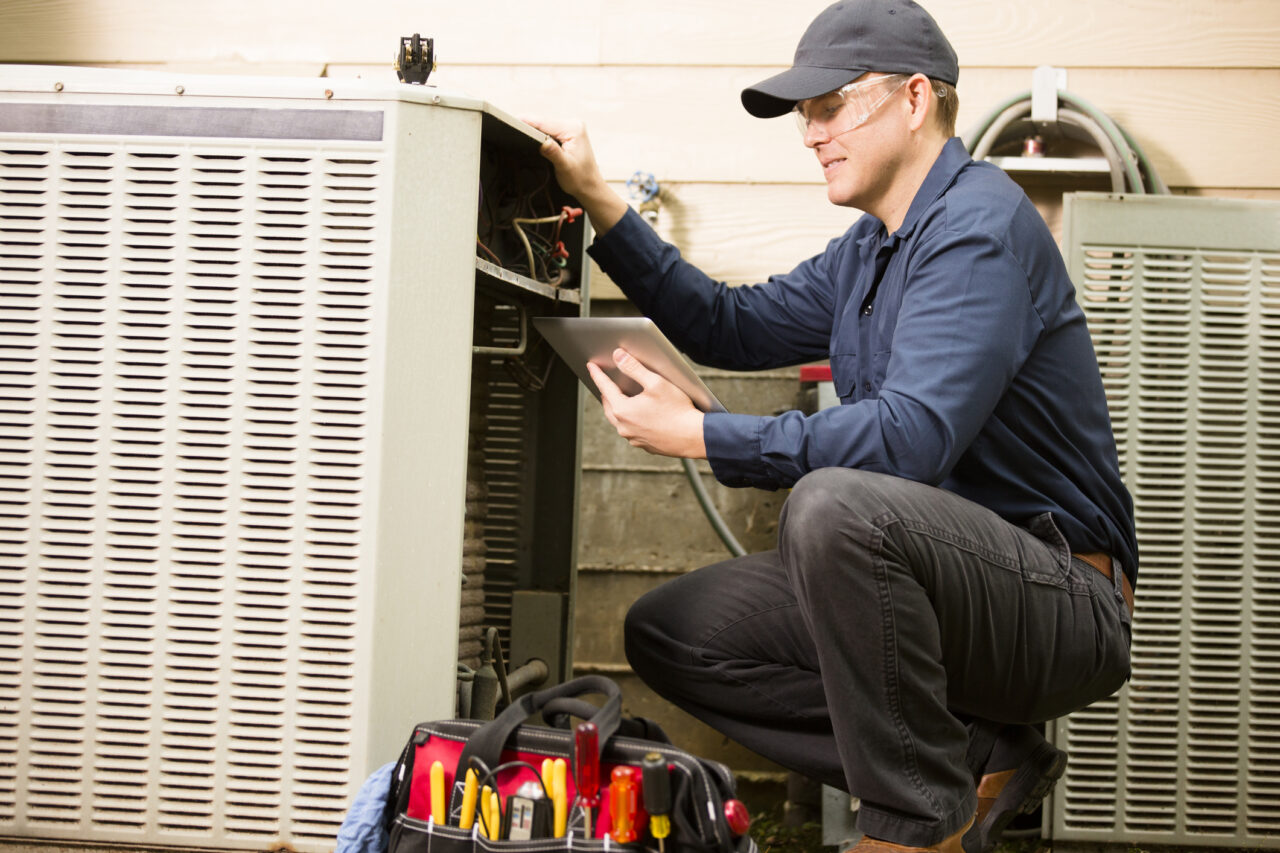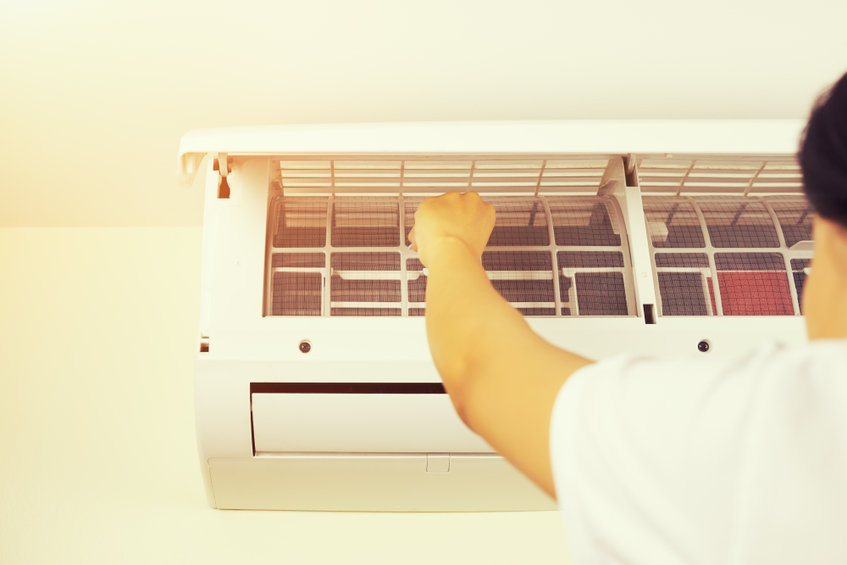If you have actually ever before experienced a circumstance where the air conditioning in your skyscraper appeared to be blowing warm air in spite of the thermostat being set to cool down, you might be familiar with among the typical troubles faced in such structures.
However, this concern is just the tip of the iceberg when it comes to the intricacies of air conditioning fixings in tall structures. Comprehending the elaborate interplay in between different factors influencing HVAC systems in high-rises is crucial for effective fixing and maintenance.

Trick Takeaways
- Weak air movement in high-rises shows ductwork design concerns.
- Thermostat calibration is critical for exact temperature level control.
- Refrigerant leaks impact effectiveness and require prompt sealing.
- Correct maintenance of condensate water drainage protects against obstructions in tall structures.
Poor Air flow
If you discover weak airflow in your skyscraper, maybe a sign of underlying problems with the cooling system. Common root causes of inadequate airflow often stem from air movement limitations within the ductwork style. These limitations can take place due to different factors such as clogs, incorrect sizing of ducts, or perhaps bends and turns in the ductwork that hinder the smooth circulation of air.
One of the key aspects adding to air movement constraints is the design of the ductwork. Poorly created duct systems can lead to irregular distribution of air throughout the structure, leading to certain locations obtaining not enough cooling or heating. Additionally, inadequate insulation or leaking air ducts can even more intensify airflow issues, creating energy wastefulness and pain for passengers.
To deal with airflow issues effectively, it is essential to have the ductwork examined by a specialist cooling and heating professional. They can recognize any restrictions, leakages, or style imperfections and recommend suitable solutions to enhance air movement and boost the general efficiency of the cooling system in your skyscraper.

Thermostat Malfunctions
When experiencing thermostat malfunctions in high-rise buildings, expert treatment is necessary to ensure the performance of the air conditioning system. Malfunctioning wiring can bring about imprecise temperature analyses, triggering inconsistent temperatures throughout the structure. Sensor calibration is vital to guarantee that the thermostat accurately reflects the ambient temperature level, avoiding unneeded air conditioning or home heating. Additionally, concerns with sensing unit calibration can lead to the system running longer than required, impacting power effectiveness.
To attend to thermostat malfunctions properly, think about the following:
- Check for faulty wiring that may be causing temperature inconsistencies.
- Frequently adjust sensing units to keep accurate temperature analyses.

- Maximize thermostat settings for enhanced energy efficiency.
- Ensure correct setup of the thermostat to avoid malfunctions.
- Seek advice from a/c specialists to detect and settle complex thermostat problems immediately.
Cooling agent Leaks
Addressing refrigerant leaks promptly is vital for preserving the efficiency of your cooling system in high-rise buildings. Cooling agent plays a crucial duty in the cooling process by taking in and releasing warm, but leaks can disrupt this cycle. When refrigerant leakages occur, the system's efficiency lowers, bring about greater energy usage and lowered cooling capability. Monitoring cooling agent stress is essential to finding leaks beforehand. A decrease in stress can suggest a leakage, prompting prompt repair services to avoid further damage.
Leak discovery methods such as using digital leak detectors or ultraviolet color can aid identify the resource of the leakage. When recognized, the leakage must be secured without delay to stop refrigerant loss and assure the best system efficiency. Routine maintenance checks can likewise aid avoid leakages by determining possible weak points in the system before they end up being significant issues. By attending to cooling agent leaks quickly and implementing correct leakage detection measures, you can keep the efficiency of your a/c system in skyscrapers and prevent pricey repair work down the line.
Irregular Air Conditioning Distribution
Keeping consistent air flow is essential for attaining even cooling distribution in high-rise buildings. When irregular cooling takes place, certain areas might become uncomfortably cozy while others remain chilly, causing tenant frustration.
To address this problem properly, think about the following:
- Thermostat Placement: Validate thermostats lie far from warm resources or cold drafts to precisely evaluate the temperature and regulate cooling.
- Stabilizing Dampers: Regularly check and change balancing dampers to manage the quantity of airflow per area, promoting well balanced air conditioning throughout the structure.
- Appropriate Insulation: Examine insulation around ductwork to avoid air leakage, keeping the most effective temperature control and effective air circulation.
- Air Filter Upkeep: Clean or change air filters regularly to prevent blockages that can hinder airflow and hamper even cooling distribution.
- Heating And Cooling System Zoning: Make use of zoning systems to split the building right into separate areas with specific temperature level controls, guaranteeing each area receives the ideal quantity of cooling.
Condensate Drain Issues
Regularly evaluate and clear condensate drainage systems to prevent prospective blockages and warranty optimal operating in high-rise buildings. Obstructed pipes are a common issue in cooling systems, specifically in skyscrapers where the condensate drainage lines can run cross countries. To prevent clogs, it's crucial to schedule routine maintenance checks.
Begin by aesthetically checking the drain lines for any indicators of obstructing or buildup. Additionally, purge the lines with a blend of water and bleach to avoid algae and mold and mildew development, which can result in clogs.
Maintenance ideas for condensate drain systems include setting up a drain frying pan treatment to prevent microbial growth, routinely transforming air filters to maintain proper air flow, and making sure that the drainage lines have appropriate incline for water to stream freely.

If you observe any type of indicators of an obstructed condensate drainpipe, such as water leaks or lowered cooling performance, resolve the problem immediately to prevent additional damages to the HVAC system. By remaining proactive with upkeep, you can prevent costly fixings and warranty effective operation of the a/c system in skyscrapers.
Frequently Asked Inquiries
Can A/c Repair Works in Skyscraper Be More Expensive Than in Single-Family Homes or Low-Rise Structures? air conditioner not working
Air conditioning repairs in high-rise buildings can without a doubt be much more costly compared to single-family homes or low-rise buildings. The intricacy of the systems and the trouble in accessing units in high structures can drive up the repair expenditures.
To minimize these costs, think about routine upkeep pointers like transforming filters regularly and scheduling specialist examinations. Preventative treatment can aid determine problems early and stay clear of expensive repair services down the line.
How Can Homeowners in High-Rise Buildings Make Sure Appropriate Upkeep of Their Air Conditioning Equipments to stop Typical Problems?
To guarantee your a/c system in a skyscraper runs efficiently, adhere to these maintenance suggestions.
Maintain filters tidy to improve energy efficiency and air quality. Look for leaks on a regular basis and schedule professional evaluations annually. Use a dehumidifier to control humidity levels.
Are There Any Kind Of Details Challenges or Troubles Related To Repairing Air Conditioning Solutions in Skyscraper Compared to Other Types of Buildings?
When repairing a/c systems in high-rise buildings, there specify difficulties to think about. Safety policies need to be strictly complied with to ensure the health of locals and workers.
Accessibility challenges may emerge due to the elevation of the structure, making it more challenging to reach particular locations for maintenance.
Noise problems are likewise common as the audio from the system can take a trip quickly in between floors.
Preserving energy effectiveness is pivotal in these high frameworks to maintain expenses down.
What Are Some Prospective Long-Term Outcome of Neglecting Cooling Fixes in a Skyscraper?
If you neglect a/c repairs in a high-rise building, potential threats can include reduced power efficiency, bring about greater utility expenses.
In addition, bad upkeep can influence interior air high quality, causing discomfort and health problems for occupants.
It's important to attend to these issues without delay to assure the correct functioning of the system and keep a comfy atmosphere for everybody in the structure.
Exist Any Type Of Specific Rules or Structure Codes That Govern Air Conditioning Fixes in Skyscraper That Locals Should Understand?
When it concerns cooling repairs in skyscrapers, citizens must recognize details laws and building regulations. These standards regulate the upkeep of cooling and heating systems, assuring safety and effectiveness.
Conclusion
Generally, keeping appropriate a/c in skyscrapers can be a challenge as a result of typical troubles like poor air flow, thermostat breakdowns, cooling agent leaks, irregular cooling distribution, and condensate drainage problems.
Routine upkeep and punctual repairs are essential to assure the convenience and security of owners. By resolving these concerns in a prompt fashion, structure owners can prevent pricey repairs and secure a positive indoor atmosphere for all locals.
